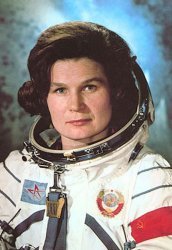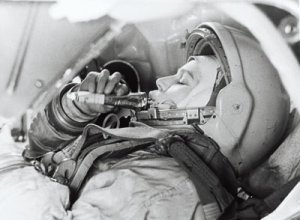Initially, it was planned that two women's crews would go into space, but in the end, the laurels of the world's first woman to fly into space, went only to Valentina Tereshkova.
The first among equals
In March 1963 there were five nominees for this honorable role. Tereshkova gave preference for several reasons. Not the least role was played by the political moment: Tereshkova was from a simple working family, whereas, for example, Solovyov and Ponomarev could not "boast" of proletarian origin. Father Tereshkova gave his life for his country, fighting in the Soviet-Finnish war. The first request, voiced from the mouth of Tereshkova after returning to Earth, was to provide data about the place of death of her father.
For the first time, a Soviet woman cosmonaut flew into space on June 16, 1963. The flight duration was about three days. The Vostok-6 spacecraft started from the Baikonur cosmodrome, and not from the Gagarin platform, but from the backup one.
Tereshkova herself did not tell her family that she was flying into space, and she explained her absence by paratroopers' competitions. The family learned about the flight already from the news.
Call sign Tereshkova was the Seagull. "Hey! The sky, take off your hat! "- so Tereshkova paraphrased a passage from the famous Mayakovsky poem, addressing this message to the sky, which was to submit to her ...

Problems in flight
The flight was accompanied by many problems. Tereshkova could not cope with the tasks of orienting the ship. She herself explained the difficulties by the fact that the commands she issued were polar opposite to the movement, not in automatic mode, but in manual mode, so the ship turned in the opposite direction. In the same automatic mode with polarity, everything was in order, which made it possible to correctly orient and land the ship.
There were problems and another plan, physiological, related to the characteristics of the female body. Numerous observations of women candidates for cosmonauts made it possible to establish that on certain days of the life cycle of women, resistance to extreme conditions of space flight sharply decreases.

All candidates completed the pre-flight training and preparation program, after which a full physiological and medical examination was performed. According to its results, the sequence of access to space flight was determined. The first in this sequence was Valentina Ponomareva, then Irina Solovyeva, after her Tatyana Kuznetsova and Zhanna Sergeychik. Valentina Tereshkova was only the fifth, but added a political factor (not without the intervention of NS Khrushchev). As a result, despite the conclusion of the medical commission, Valentina Tereshkova was the first to fly into space.
The flight mode could not be sustained in the planned mode: the delay in launching the carrier also had a significant effect, and a great psycho-emotional load when the spacecraft was placed into orbit.
Despite the discomfort and unpleasant feelings, Tereshkova courageously spent about three days in space and steadily withstood 48 turns around the Earth. During the flight, she, apart from running a logbook, was engaged in photographing the horizon. Thanks to these images, aerosol layers were subsequently found in the earth's atmosphere.
The return to Earth was successful, landing was made in Altai, in the Bayevsky district.
The material is taken from the site http://www.letopis.info/themes/cosmonautics/pervaja_jensheina_v_kosmose.html